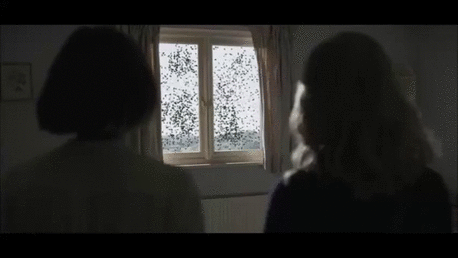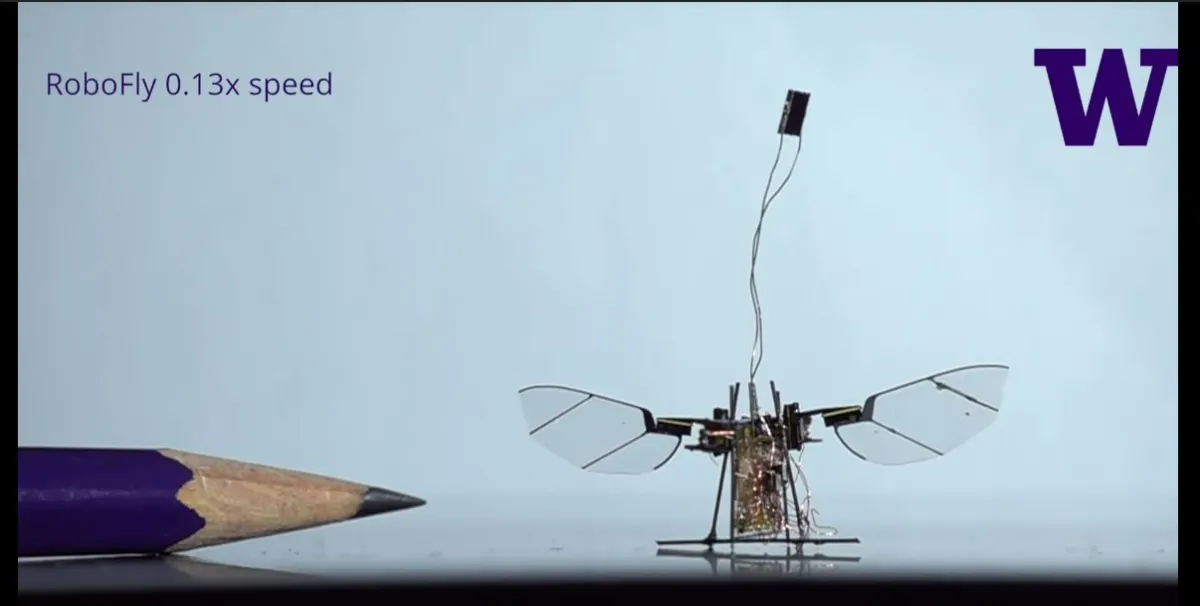Humanity continues to barrel head-first into the robot apocalypse, with no signs of slowing down. This week, scientists at the University of Washington debuted the RoboFly, the first wireless insect-sized flying robot.
RoboFly is slightly heavier than a toothpick and is powered by an invisible laser beam, which is then converted to laser energy via a tiny onboard circuit. This solves the long-standing flaw in insect drone design: supplying a power source that will keep the wings flapping but not weigh down the drone. “Before now, the concept of wireless insect-sized flying robots was science fiction. Would we ever be able to make them work without needing a wire?” said Sawyer Fuller, an assistant professor in the UW Department of Mechanical Engineering. “Our new wireless RoboFly shows they’re much closer to real life.”


This is exciting news for scientists and terrifying news for fans of the Black Mirror episode “Hated in the Nation”. As you may recall, the episode features Kelly Macdonald (Brave) and Faye Marsay (Game of Thrones) as cops investigating the murders of victims of social media #DeathTo campaigns. They discover that someone is hacking into ADIs (Autonomous Drone Insects), which were developed by a company called Granular to counteract a sudden colony collapse disorder in the bee population. Spoiler Alert: this story does not end well.

In addition to the laser beam technology used to power the fly, the creators have added a microcontroller to the on-board circuit. “The microcontroller acts like a real fly’s brain telling wing muscles when to fire,” said co-author Vikram Iyer, a doctoral student in the UW Department of Electrical Engineering. “On RoboFly, it tells the wings things like ‘flap hard now’ or ‘don’t flap.'” A tiny insect robot with its own power source and brain…what could possibly go wrong? The inventors are hoping for practical applications for the RoboFlies, like sniffing out methane leaks, surveying crop growth, and murdering us all. Check out the video below of the RoboFly in terrifying action.
I would like to take this moment to speak directly to the RoboFlies: as a trusted blogging personality, I can be helpful in rounding up others to toil in your underground invisible laser caves. Call me.
(via TechXplore, image: screengrab)
Want more stories like this? Become a subscriber and support the site!
—The Mary Sue has a strict comment policy that forbids, but is not limited to, personal insults toward anyone, hate speech, and trolling.—










Published: May 16, 2018 01:50 pm